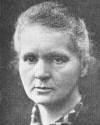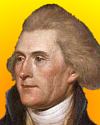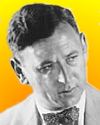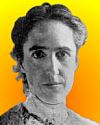 | TODAY IN SCIENCE HISTORY
NEWSLETTER - 4 JULY |
 On 4 Jul 1790, Sir George Everest was born. Yes, you've heard that name for a mountain in the Himalayas - Mt. Everest. And yes, it is named after him. But do you know why? Today's Science Store pick is: The Great Arc: The Dramatic Tale of How India Was Mapped and Everest Was Named, by John Keay. In fact, Sir Everest never even saw Mt. Everest - he was too busy as surveyor-general of India with his obsession:the Great Indian Arc of the Meridian, a benchmark series of measurements running from India's southern tip up to the Himalayas. The cantankerous Colonel headed an army of men, instruments, elephants and horses hauling a half-ton theodolite and braving tiger-infested jungles. But there is more to tell of the of his monumental ego, and the impact of the project on the Indians who living inits path. Along the way, the author paints images of the landscapes and climate and brings to life the personalities of the survey. It took the better part of a century, and Everest took over after the death of William Lambton who had started the work, that was in fact his idea. Available from $1.70 used, or new from $20.78% (as of time of writing). On 4 Jul 1790, Sir George Everest was born. Yes, you've heard that name for a mountain in the Himalayas - Mt. Everest. And yes, it is named after him. But do you know why? Today's Science Store pick is: The Great Arc: The Dramatic Tale of How India Was Mapped and Everest Was Named, by John Keay. In fact, Sir Everest never even saw Mt. Everest - he was too busy as surveyor-general of India with his obsession:the Great Indian Arc of the Meridian, a benchmark series of measurements running from India's southern tip up to the Himalayas. The cantankerous Colonel headed an army of men, instruments, elephants and horses hauling a half-ton theodolite and braving tiger-infested jungles. But there is more to tell of the of his monumental ego, and the impact of the project on the Indians who living inits path. Along the way, the author paints images of the landscapes and climate and brings to life the personalities of the survey. It took the better part of a century, and Everest took over after the death of William Lambton who had started the work, that was in fact his idea. Available from $1.70 used, or new from $20.78% (as of time of writing).
For picks from earlier newsletters, see the Today in Science Science Store home page. | |

| "I am among those who think that science has great beauty. A scientist in his laboratory is not only a technician: he is also a child placed before natural phenomena which impress him like a fairy tale. We should not allow it to be believed that all scientific progress can be reduced to mechanisms, machines, gearings, even though such machinery has its own beauty." - Scientist, to be named in the quiz below (died 4 Jul 1934)  |
| "If it were possible for a metaphysician to be a golfer, he might perhaps occasionally notice that his ball, instead of moving forward in a vertical plane (like the generality of projectiles, such as brickbats and cricket balls), skewed away gradually to the right. If he did notice it, his methods would naturally lead him to content himself with his caddies's remark-'ye heeled that yin,' or 'Ye jist sliced it.' ... But a scientific man is not to be put off with such flimsy verbiage as that. He must know more. What is 'Heeling', what is 'slicing', and why would either operation (if it could be thoroughly carried out) send a ball as if to cover point, thence to long slip, and finally behind back-stop? These, as Falstaff said, are 'questions to be asked.'" - Peter Guthrie Tait, Scottish physicist and mathematician (died 4 Jul 1901)  |
 | "Nature intended me for the tranquil pursuits of science, by rendering them my supreme delight. But the enormities of the times in which I have lived, have forced me to take a part in resisting them, and to commit myself on the boisterous ocean of political passions." - U.S. President, to be named in quiz below (died 4 Jul 1826)  |
| Before you look at today's web page, see if you can answer some of these questions about the events that happened on this day. Some of the names are very familiar. Others will likely stump you. Tickle your curiosity with these questions, then check your answers on today's web page. |

|  An American cartoonist was born 4 Jul 1883 who satirized the American preoccupation with technology. His name became synonymous with any simple process made outlandishly complicated because of his series of “Invention” cartoons which use a string of outlandish tools, people, plants and steps to accomplish everyday simple tasks in the most complicated way. An American cartoonist was born 4 Jul 1883 who satirized the American preoccupation with technology. His name became synonymous with any simple process made outlandishly complicated because of his series of “Invention” cartoons which use a string of outlandish tools, people, plants and steps to accomplish everyday simple tasks in the most complicated way.
 Can you name this man? |
 |  Henrietta Swan Leavitt, born 4 July 1868, was an American astronomer known for her discovery of the relationship between period and luminosity in Cepheid variables, pulsating stars that vary regularly in brightness in periods ranging from a few days to several months. In 1912, she announced what has since become known as the famous Period-Luminosity relation. Henrietta Swan Leavitt, born 4 July 1868, was an American astronomer known for her discovery of the relationship between period and luminosity in Cepheid variables, pulsating stars that vary regularly in brightness in periods ranging from a few days to several months. In 1912, she announced what has since become known as the famous Period-Luminosity relation.
 What can be calculated using the Period-Luminosity relation? |

|  A scientist (1867-1934) who died of radiation poisoning before the need for protection was known, discovered two new elements. This scientist's family won five Nobel awards in two generations. A scientist (1867-1934) who died of radiation poisoning before the need for protection was known, discovered two new elements. This scientist's family won five Nobel awards in two generations.
 Can you name this scientist? Can you name this scientist? |

|  A U.S. president died on 4 Jul 1826 who was throughout his lifetime an extraordinarily learned man. His interests included mathematics and natural sciences. He corresponded with such men as Joseph Priestley, and sometimes contributed time and money to progress in these fields. He collected and classified fossils. He was interested in the experiments being made in ballons and submarines. While visiting Europe, he sent home various mechanical and scientific gadgets produced including a polygraph and phosphorus matches. A U.S. president died on 4 Jul 1826 who was throughout his lifetime an extraordinarily learned man. His interests included mathematics and natural sciences. He corresponded with such men as Joseph Priestley, and sometimes contributed time and money to progress in these fields. He collected and classified fossils. He was interested in the experiments being made in ballons and submarines. While visiting Europe, he sent home various mechanical and scientific gadgets produced including a polygraph and phosphorus matches.  Can you name this man? Can you name this man? |
|  On 24 Jul 1054, Chinese and other astronomers saw a supernova, a violently exploding star that was visible in daylight for 23 days and at night for almost 2 years. Rock paintings in North America suggest that Indians in Arizona and New Mexico saw it. There are no European records of the event. On 24 Jul 1054, Chinese and other astronomers saw a supernova, a violently exploding star that was visible in daylight for 23 days and at night for almost 2 years. Rock paintings in North America suggest that Indians in Arizona and New Mexico saw it. There are no European records of the event.
 Can you name the nebula in the constellation Taurus that is believed to be remnants of this supernova? |
|  On 4 Jul 1998, a country launched a spacecraft to become the third nation (after Russia and the U.S.) to reach for Mars. The spacecraft made two fly-bys of the Moon in Sep and Dec in order to reshape its trajectory for an intended arrival in a highly elliptical Mars Orbit in Oct 1999. Unfortunately, the attempt failed, and the plans were changed to alter the spacecraft's trajectory to reach Mars in 2003. The mission was designed to measure the interaction between the solar wind and Martian upper atmosphere. On 4 Jul 1998, a country launched a spacecraft to become the third nation (after Russia and the U.S.) to reach for Mars. The spacecraft made two fly-bys of the Moon in Sep and Dec in order to reshape its trajectory for an intended arrival in a highly elliptical Mars Orbit in Oct 1999. Unfortunately, the attempt failed, and the plans were changed to alter the spacecraft's trajectory to reach Mars in 2003. The mission was designed to measure the interaction between the solar wind and Martian upper atmosphere.
 Which country was making this attempt to visit Mars? |
|  In 1997, the Mars Pathfinder, an unmanned U.S. space vehicle, reached the Martain atmosphere. The descent was braked by a heat shield, a parachute and rockets. Using a new NASA effort for "cheaper, faster, better," the Mars Pathfinder used airbags to cushion its landing on the surface. It carried Sojourner, a 10-kg (22-lb) wheeled rover device designed to travel slowly across the surface of Mars taking photographs and collect other scientific data. In 1997, the Mars Pathfinder, an unmanned U.S. space vehicle, reached the Martain atmosphere. The descent was braked by a heat shield, a parachute and rockets. Using a new NASA effort for "cheaper, faster, better," the Mars Pathfinder used airbags to cushion its landing on the surface. It carried Sojourner, a 10-kg (22-lb) wheeled rover device designed to travel slowly across the surface of Mars taking photographs and collect other scientific data.
 How many months did it take to travel from Earth to Mars? |
When you have your answers ready to all the questions above, you'll find all the information to check them, and more, on the July 4 web page of Today in Science History. Or, try this link first for just the brief answers.
Fast answers for the previous newsletter for July 3: finding the surface with minimal area; determined by a fixed boundary; Major William Crawford Gorgas; Midway; John Couch Adams.
|
 If you enjoy this newsletter, the website, or wish to offer encouragement or ideas, please send feedback by using your mail reader Reply button. If you enjoy this newsletter, the website, or wish to offer encouragement or ideas, please send feedback by using your mail reader Reply button. |
--
If you do not want to receive any more newsletters,
Unsubscribe To update your preferences and to unsubscribe visit
this link 





 An American cartoonist was born 4 Jul 1883 who satirized the American preoccupation with technology. His name became synonymous with any simple process made outlandishly complicated because of his series of “Invention” cartoons which use a string of outlandish tools, people, plants and steps to accomplish everyday simple tasks in the most complicated way.
An American cartoonist was born 4 Jul 1883 who satirized the American preoccupation with technology. His name became synonymous with any simple process made outlandishly complicated because of his series of “Invention” cartoons which use a string of outlandish tools, people, plants and steps to accomplish everyday simple tasks in the most complicated way. Can you name this man?
Can you name this man?
 Henrietta Swan Leavitt, born 4 July 1868, was an American astronomer known for her discovery of the relationship between period and luminosity in Cepheid variables, pulsating stars that vary regularly in brightness in periods ranging from a few days to several months. In 1912, she announced what has since become known as the famous Period-Luminosity relation.
Henrietta Swan Leavitt, born 4 July 1868, was an American astronomer known for her discovery of the relationship between period and luminosity in Cepheid variables, pulsating stars that vary regularly in brightness in periods ranging from a few days to several months. In 1912, she announced what has since become known as the famous Period-Luminosity relation. What can be calculated using the Period-Luminosity relation?
What can be calculated using the Period-Luminosity relation?
 A scientist (1867-1934) who died of radiation poisoning before the need for protection was known, discovered two new elements. This scientist's family won five Nobel awards in two generations.
A scientist (1867-1934) who died of radiation poisoning before the need for protection was known, discovered two new elements. This scientist's family won five Nobel awards in two generations. Can you name this scientist?
Can you name this scientist? 
 A U.S. president died on 4 Jul 1826 who was throughout his lifetime an extraordinarily learned man. His interests included mathematics and natural sciences. He corresponded with such men as Joseph Priestley, and sometimes contributed time and money to progress in these fields. He collected and classified fossils. He was interested in the experiments being made in ballons and submarines. While visiting Europe, he sent home various mechanical and scientific gadgets produced including a polygraph and phosphorus matches.
A U.S. president died on 4 Jul 1826 who was throughout his lifetime an extraordinarily learned man. His interests included mathematics and natural sciences. He corresponded with such men as Joseph Priestley, and sometimes contributed time and money to progress in these fields. He collected and classified fossils. He was interested in the experiments being made in ballons and submarines. While visiting Europe, he sent home various mechanical and scientific gadgets produced including a polygraph and phosphorus matches.  Can you name this man?
Can you name this man?  On 24 Jul 1054, Chinese and other astronomers saw a supernova, a violently exploding star that was visible in daylight for 23 days and at night for almost 2 years. Rock paintings in North America suggest that Indians in Arizona and New Mexico saw it. There are no European records of the event.
On 24 Jul 1054, Chinese and other astronomers saw a supernova, a violently exploding star that was visible in daylight for 23 days and at night for almost 2 years. Rock paintings in North America suggest that Indians in Arizona and New Mexico saw it. There are no European records of the event. Can you name the nebula in the constellation Taurus that is believed to be remnants of this supernova?
Can you name the nebula in the constellation Taurus that is believed to be remnants of this supernova? On 4 Jul 1998, a country launched a spacecraft to become the third nation (after Russia and the U.S.) to reach for Mars. The spacecraft made two fly-bys of the Moon in Sep and Dec in order to reshape its trajectory for an intended arrival in a highly elliptical Mars Orbit in Oct 1999. Unfortunately, the attempt failed, and the plans were changed to alter the spacecraft's trajectory to reach Mars in 2003. The mission was designed to measure the interaction between the solar wind and Martian upper atmosphere.
On 4 Jul 1998, a country launched a spacecraft to become the third nation (after Russia and the U.S.) to reach for Mars. The spacecraft made two fly-bys of the Moon in Sep and Dec in order to reshape its trajectory for an intended arrival in a highly elliptical Mars Orbit in Oct 1999. Unfortunately, the attempt failed, and the plans were changed to alter the spacecraft's trajectory to reach Mars in 2003. The mission was designed to measure the interaction between the solar wind and Martian upper atmosphere. Which country was making this attempt to visit Mars?
Which country was making this attempt to visit Mars? In 1997, the Mars Pathfinder, an unmanned U.S. space vehicle, reached the Martain atmosphere. The descent was braked by a heat shield, a parachute and rockets. Using a new NASA effort for "cheaper, faster, better," the Mars Pathfinder used airbags to cushion its landing on the surface. It carried Sojourner, a 10-kg (22-lb) wheeled rover device designed to travel slowly across the surface of Mars taking photographs and collect other scientific data.
In 1997, the Mars Pathfinder, an unmanned U.S. space vehicle, reached the Martain atmosphere. The descent was braked by a heat shield, a parachute and rockets. Using a new NASA effort for "cheaper, faster, better," the Mars Pathfinder used airbags to cushion its landing on the surface. It carried Sojourner, a 10-kg (22-lb) wheeled rover device designed to travel slowly across the surface of Mars taking photographs and collect other scientific data. How many months did it take to travel from Earth to Mars?
How many months did it take to travel from Earth to Mars? If you enjoy this newsletter, the website, or wish to offer encouragement or ideas, please send feedback by using your mail reader Reply button.
If you enjoy this newsletter, the website, or wish to offer encouragement or ideas, please send feedback by using your mail reader Reply button. 

Δεν υπάρχουν σχόλια:
Δημοσίευση σχολίου